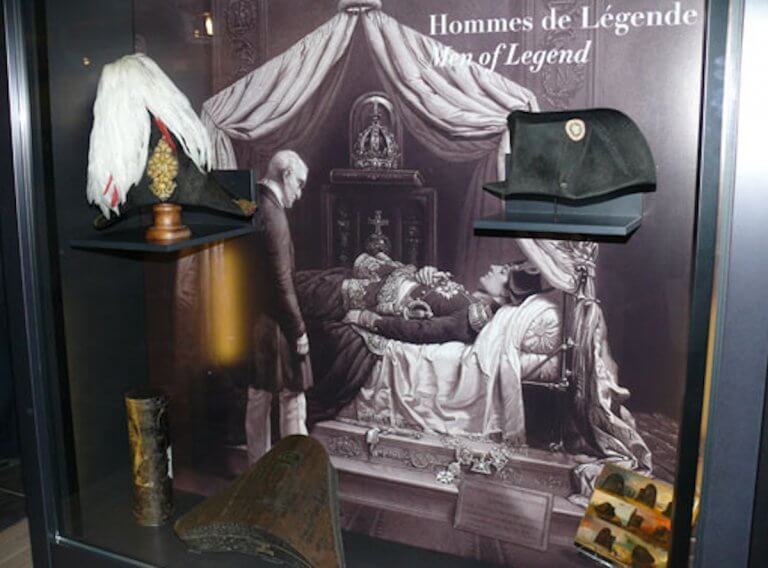Every now and then, our Objectivity series will showcase an object or objects that provide springboards into unexpected stories, as the best museum objects do.

They would be spinning in their graves if they knew, but Napoleon and Wellington’s bicornes (two-cornered hats) are permanently sitting in the same glass case in a Bayonne museum. They might not have minded so much that their distinctive head gear (albeit it different editions) were temporarily brought together for an exhibition at the Musée Wellington in 2015 (see image above). But forever?
Their hats may have been of a similar style but that is where the similarities ended. Wellington wore his hat front to back, as did all British officers, whereas Napoleon wore his sideways, supposedly to make himself discernible on the battlefield. Napoleon’s black felt hat is relatively unadorned, while Wellington’s is festooned with feathers and braid. The French Emperor would order a new hat every three months from the Parisian hat-maker Poupart & Cie, and didn’t like to wear them new so his valets broke them in for him. The English Iron Duke’s was made by Moore of Old Bond Street. Bonaparte’s brand was his chapeaux, Wellington’s his boots.
Despite the impression that their destinies were closely entwined, the two men never met or corresponded. They only directly contested once in battle when Napoleon met his Waterloo. In that sense, Wellington was his nemesis. And whilst their enmity was genuine, it did not extend to a desire for assassination. It is claimed that during the battle a British artillery officer came to Wellington to tell him that he had a clear shot on Napoleon but Wellington replied, “No, no. Generals commanding armies have something else to do than to shoot at one another.”
In fact, that the two hats find themselves sharing a case in Bayonne is testimony to a happier chapter in Anglo-French relations. In October 1945, Lady Astor quietly gave them as gift on behalf of the British nation in recognition of the bravery of the French SAS in WWII, especially during D-Day and the liberation of France. They are now in the safekeeping of the successor regiment, the 1er Régiment de Parachutistes d’Infanterie de Marine, based in Bayonne. Strangely, perhaps it is a rather charming kind of détente.
